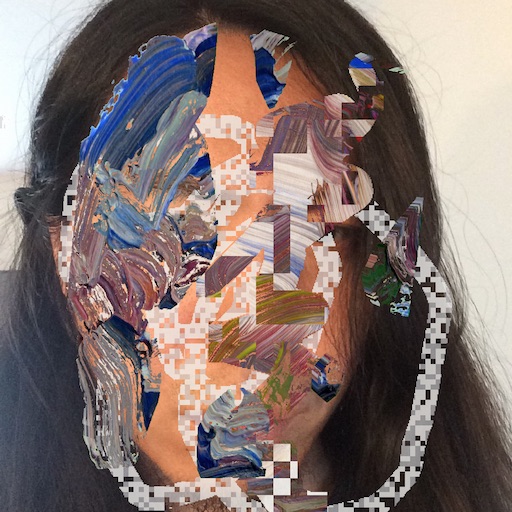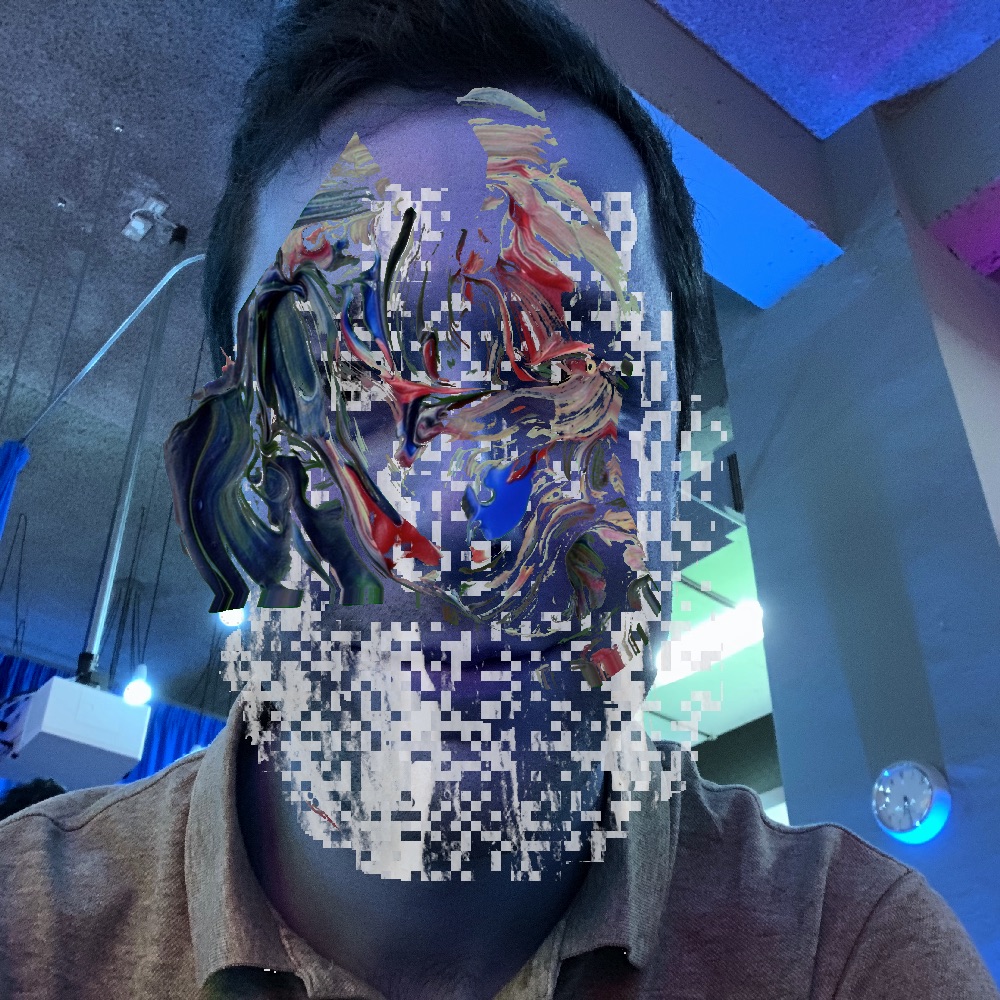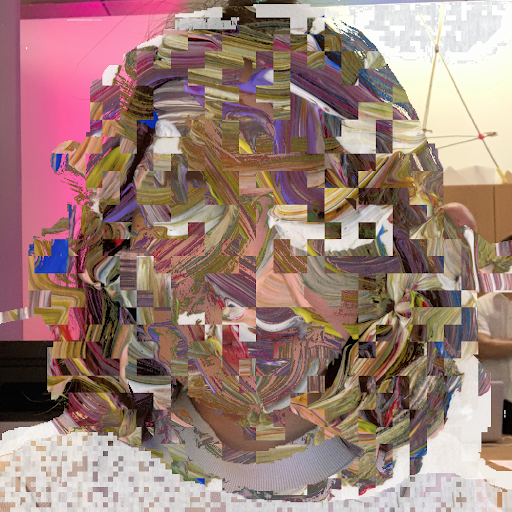Paint Your Face Away: workshop at Late at Tate Britain – August 2019
Paint Your Face Away is a drop-in digital face painting workshop by Shinji Toya. The development of the digital face painting tool for this session has been inspired by Frank Bowling’s paintings. Participants use the painter to create their profile pictures while running a real-time face detection on the image of a face being painted so that at one point the profile picture stops being detected by the computer vision through the painting process. In this way, the digital paint acts as a type of disruptive noise for the machine.
Just as Bowling’s work shifted from the figurative to the abstraction, involving the techniques associated with the fluidity of paint and patchiness of bounded areas, the workshop explores how the figuration of a recognisable “face” in the eye of the machine is obscured by the fluid digital paint and the discontinuous textures and patterns.
Face detection technologies can be used to detect and gather faces in images online. We live in an age where your faces in the online images can be put in a public dataset for training facial recognition without consent (See Adam Harvey’s investigation). Or a picture of your face could be made Creative Commons licensed so that it is not owned by you in a traditional sense, and the face is for any company or researchers to use to train facial recognition algorithms (the case of IBM and Flickr photographs).
Facial recognition technology can have multiple functions and can be used for policing and border control for identification and beyond, but also target advertising through the “mood detection” function. In other words, the technology is increasingly used for regulatory systems and commercial gain.
The face painting we play with here could be used to resist the automated scraping of the digitised faces and introduce useless noise to the biometric datafication of faces being done in service of facial recognition. As Hito Steyerl suggests, faces are quantified pixels less and less owned by us. But could we try to claim the ownership back to us through the painterly resistance?
#paintyourfaceaway



[Above images by anonymous participants]
The workshop focused on the digital face painting approach in order to compromise the integrity of the biometric information of faces potentially and resist the online face-scraping. Furthermore, the project aims to expand on the technology and concept of the adversarial attacks and mobilise the irrelevance of painting for the biometric data economy of faces.
- The face detection algorithm used for the workshop was Runway.
- A new face detection tool for the project is built by Ashwin D’Cruz.
untitled.profiles/000 | p2p web version
untitled.profiles/001 | p2p web version
untitled.profiles/002 | p2p web version
untitled.profiles/003 | p2p web version
untitled.profiles/004
untitled.profiles/014
untitled.profiles/015
(The p2p web versions are made with the support of Agorama.)